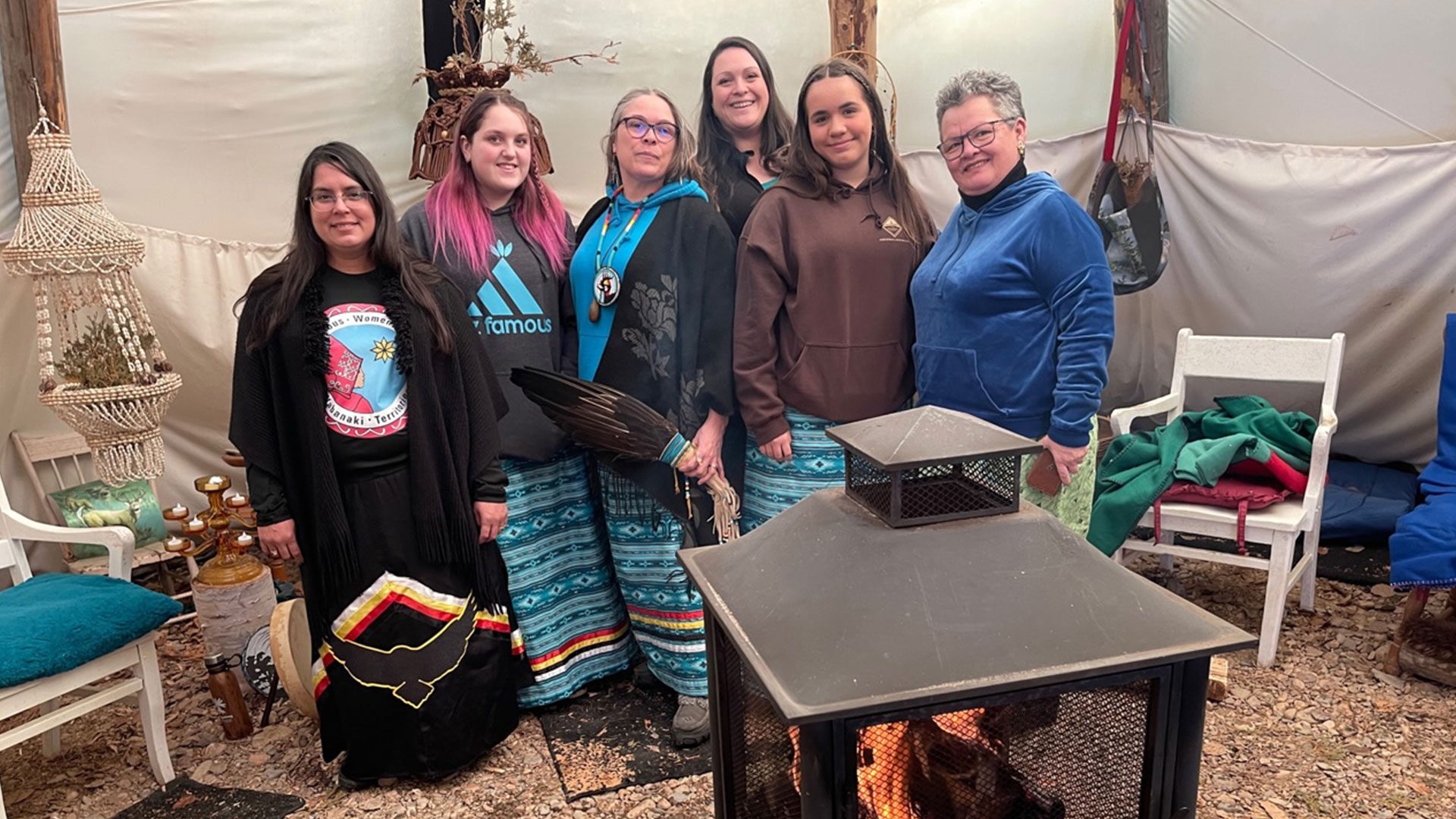In a teepee in her backyard, Marie Kryszko is putting a new spin on the game of bingo.
“If you have a beaver, there is a little picture of the beaver,” Kryszko explains the game to the women and youth who have gathered.
At this cultural teaching, two youth and three women have gathered at Kryszko’s 10-metre teepee, warmed by the fire in the wood-burning stove.
Krysko is from Pabineau First Nation in New Brunswick, a small Mi’kmaq community located two hours north of Moncton, and twenty minutes south of the Atlantic Ocean, with about 280 registered members.

She designed the interactive game to help people learn her language, one word at a time.
“Bingo is part of our culture, who doesn’t play bingo in any First Nation’s community,” she says.
Kryszko made 50 bingo cards each with images of the Mi’kmaw culture.
She calls out the words in English – and then Mi’kmaw, and explains the cultural significance.
“Once they get a line or four corners, they yell ‘Tahoe,’ they don’t yell ‘bingo,’” she says, “and then the person that won the bingo game usually the youth that I play with they have to repeat what they won.”
The winner repeats the winning words in Mi’kmaw.
Gracie Aubie, 14, is Kryszko’s granddaughter and says she’s learning Mi’kmaw to revive her culture.
“My ancestors had it before, and then it got taken away and I want to get it back,” she says.
Alicia Peter-Paul, 14, learned how to make a medicine pouch, enjoys the teepee.
“I find it’s really nice, really cool, and I kind of want one,” says Peter-Paul.
Kryszko says she was inspired to build the teepee in her backyard a few years ago after a sweat and fast.
It’s also used as a place of healing and ceremony

“I’m not the one healing you, it’s the energies, it’s the ancestors, it’s the eagle feathers, it’s that spirit helper and spirit guides, it’s the creator that works through me to help that person heal that comes to this teepee,” says Kryszko.
The temperature in Pabineau is hovering around zero as the snow melts off the teepee.
Inside, Brandy Stanovich sits by the wood fire and drums.
The president of the Indigenous Women of the Wabanaki Territories from Woodstock First Nation 350 km to the southwest, comes periodically to show support.
“We’re shaping our future by doing this, this is very, extremely important,” she says. “I can’t stress that enough. This is how you get back, how you get back what we lost, doing what Marie is doing here today.”
For Kyrszko, cultural teachings and the teepee connect her to the spirits of the past.
“It is the ancestors that are guiding me, so I listen to that message and it almost makes me emotional because the ancestors are here in this teepee,” she says.









